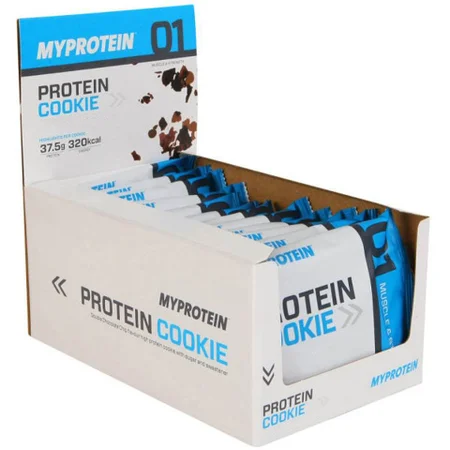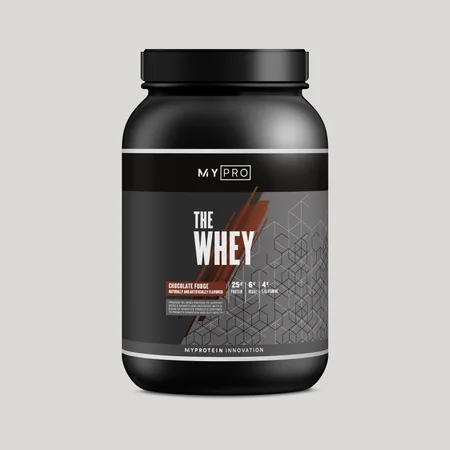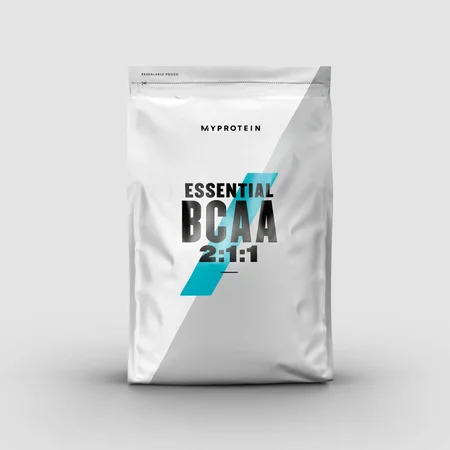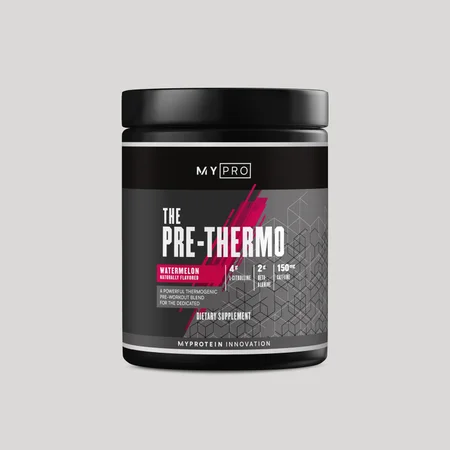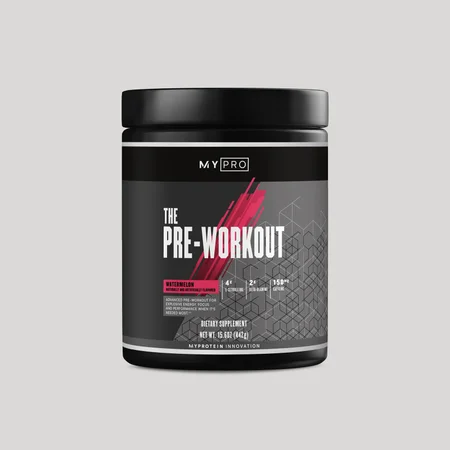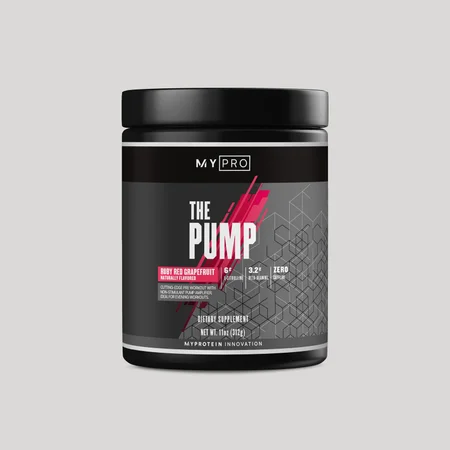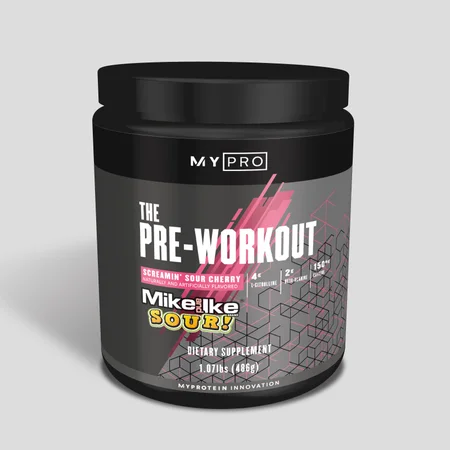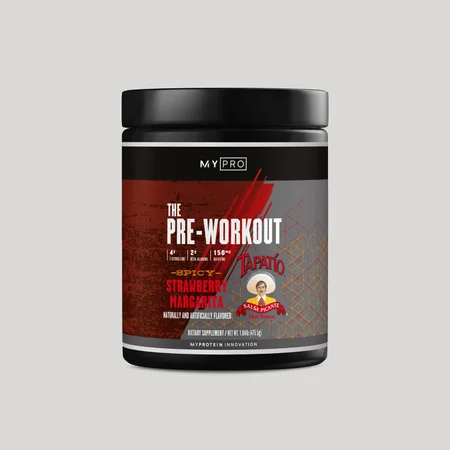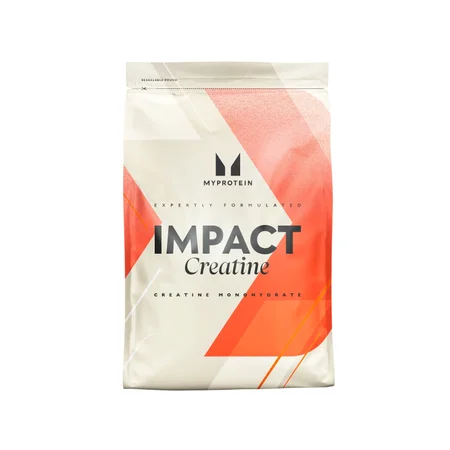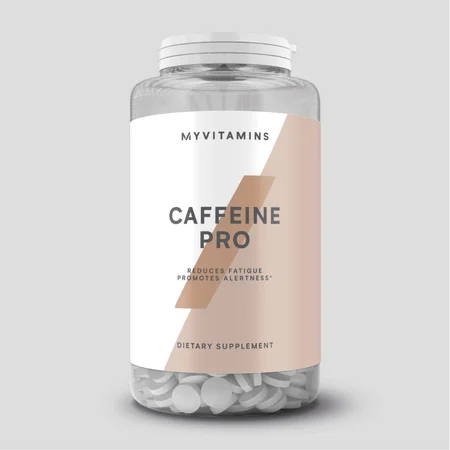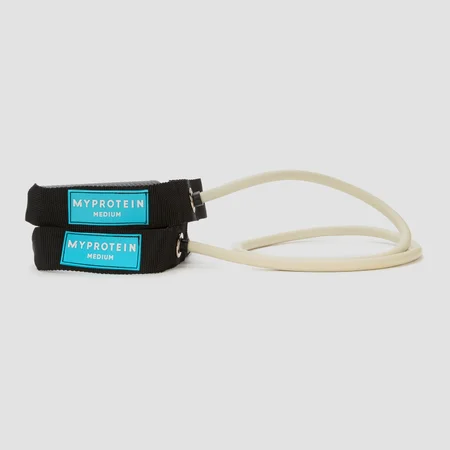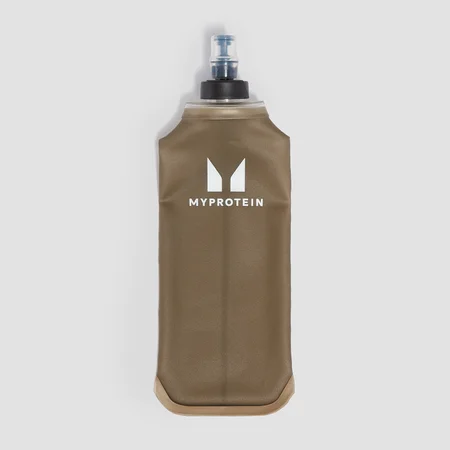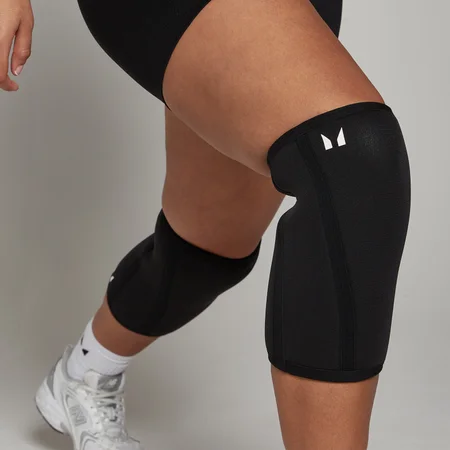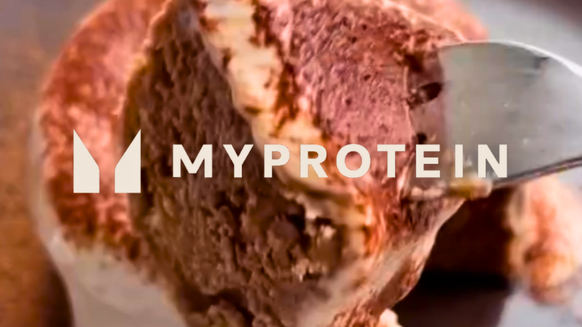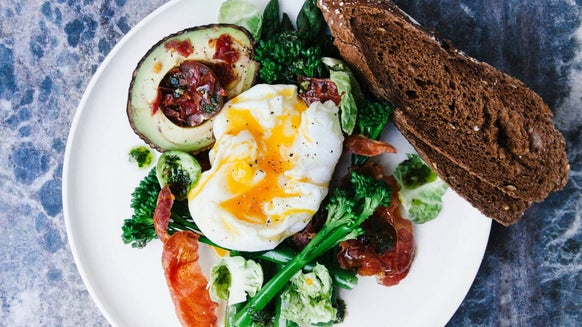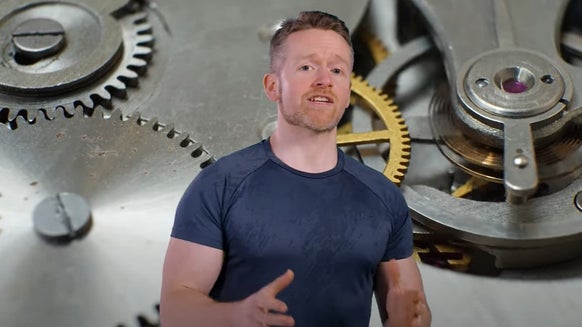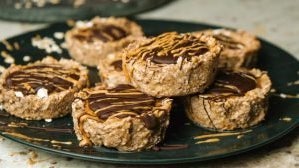Cardio Exercises That Build Muscle

Cardio is an important part of any well-rounded training program. Unfortunately, the dreaded “C” word is avoided like the plague by gym bros around the world.
Most fear that excess cardio will result in muscle loss (or they’re just lazy), so they tend to neglect it completely in their workout regimen. But not all cardio is out to “steal your gains”.
The truth is that cardio can be a crucial part of a well-rounded muscle-building program, helping to boost mass as well as offering plenty more benefits to athletic performance and overall health.
Let's see how cardio can promote muscle growth, plus all the creative ways you can get your cardio in.
Jump to:
- Benefits of Cardio for Muscle Growth
- Muscle Building Cardio Exercises
- Common Mistakes to Avoid with Cardio for Muscle Growth
- Frequently Asked Cardio Questions for Muscle Growth and Retention
- Alternative Cardio Exercises
- Tips for Enjoying Cardio
- Should You Take Pre-Workout for Cardio?
- Types of Pre-Workout Supplements
Benefits of Cardio for Muscle Growth
Cardio does more than just burning calories, including helping to build muscle. Here’s how:
Improved Energy Metabolism
Cardio can help improve cell efficiency, improving energy production during intense workouts and recovery. By boosting cell mitochondria, cardio increases the muscles’ ability to synthesize energy, allowing for more intense workouts. Additionally, the improved ability to buffer lactate can lead to more muscle growth.
Increased Fat Loss
On top of increased energy, cardio also helps reduce muscle fat. This is helpful because too much body fat can impede muscle-building.
Increased Blood Flow
Blood flow is the lifeblood of muscle development. Through increased blood flow, cardio ensures the muscles receive all the nutrients they need for growth and recovery.
Use It or Lose It
Muscles need to be used regularly to stay in top condition. Sedentary lifestyles lead to muscle breakdown, so cardio is one way to make sure your muscles stay active.
Muscle Building Cardio Exercises
If you're looking to burn fat and build muscle, there are plenty of cardio exercises that can help you achieve your goals.
High Intensity Interval Training (HIIT)

High intensity interval training (HIIT) consists of short bursts of intense activity followed by brief, timed rest periods. The goal is to get your heart rate up to near max levels quickly, allow your body to recover, and then repeat.
- Increased metabolism
- Increased anaerobic capacity
- Increased natural growth hormone production
- More fat burned after exercise than steady state cardio
HIIT will definitely have you on the floor by the end (in a good way). Quick bursts of intense cardio are ideal for those of us who really can’t stand running. It keeps your mind a little bit more engaged with all of the different exercises in a circuit, and works the whole body too.
It can be tough to get the motivation to get this one done because HIIT is definitely a tough workout. But for everyone craving a new challenge in their workouts, incorporating a couple sessions each week will really help you progress.
Plus, HIIT is extremely versatile. You can use a variety of methods, exercises, and equipment to deliver a full fat burning and muscle building workout.
Try variations like EMOM, Tabata, or hard/light intervals on the step machine.
EMOM: Perform one exercise or a range of them every minute on the minute for 10 minutes. Try 10 burpees EMOM, or try 5 press-ups, 5 squats, and 5 leg raises EMOM.
Tabata: Alternate 20 seconds of work, followed by 10 seconds of rest, repeated 8 times for each exercise (total 4 minutes) for 4 different exercises (mountain climbers, jumping jacks, squat jumps, and plyo press-ups).
Hard-light Intervals: On the step machine, alternate 30 seconds of max-effort work (fast pace) with 30 seconds of low-effort work (slow pace) for a total of 15 minutes.
For at-home HIIT routines, see our guide:
Walking Lunges
10 minutes of continuous walking lunges post-workout. Lunge 400 m (one lap around a track) as fast as possible. Between sets of any exercise, instead of a typical rest period, lunge to the end of the gym and back.
Sled Drags/Pushes/Pulls

Sled training allows for maximum work with minimal recovery because there is no eccentric loading. With typical muscle building exercises, the eccentric portion of the lift is what creates the most stress to the muscle, which leads to soreness. Sled exercises are also low-impact, and pose very little threat to joints and ligaments.
Here’s how to do it:
Push a heavy sled as fast as possible for 20-40m, rest for 1-2 minutes, and repeat for 5 sets. Push a heavy sled as far as possible in 10-20 seconds, rest for 1-2 minutes, and repeat for 5 sets. Alternate pushing and pulling a moderately light sled 50m continuously for 10 minutes.
Loaded Carries
Loaded carries build an iron-clad grip and a rock-solid core. They strengthen your forearms, biceps, triceps, shoulders, traps, upper back, abs, and obliques. Here’s how you can use them to burn calories while you build:
- Carry a heavy object 50-100 m, rest for 30 sec-1 min, and repeat for 10 sets.
Carry a heavy object as far as possible in 15 seconds, rest for 15 seconds, and repeat for 10 minutes. 10 minutes of a continuous loaded carry variation with a relatively lighter object.
Sprints
Step off of the treadmill and get outside to sprint, preferably on a field or track. Or, find a hill with a gentle slope. Here are are a few sprint workouts that you can start doing today:
5 sets: Sprint 50m-200m with a 1:4 work/rest ratio (Ex: Sprint 30 sec, rest 2 mins). Sprint 50m, then jog 50m, and repeat for one mile. Sprint up a hill, slowly walk down, and repeat for 10 rounds.

Common Mistakes to Avoid with Cardio for Muscle Growth
Too Much Volume
More is not always better. Avoid overtraining by keeping a good balance when it comes to training volume.
Slow and Steady Doesn’t Always Win
While steady-state cardio is good for cardiovascular health, it’s unlikely to stimulate the muscle fibers needed for muscle growth. For this, you’ll need to do high-intensity activities.
You Must Feel Fatigued for Benefits
You overload your muscles by gradually increasing the load, not by wearing yourself out. Sustainable progress is required to avoid burnout, so focus on consistent improvement over short-term gains.
Frequently Asked Cardio Questions for Muscle Growth and Retention

Can I do cardio every day and still build muscle?
While it’s possible to do daily cardio and build muscle, you would need to be spot on with your recovery, nutrition, and sleep strategies. Three days of cardio per week is enough to get the benefits while still dedicating enough time to resistance training and recovery.
What is the best way to combine cardio and resistance training?
If time were no object, then it would be better to have separate training sessions for cardio and resistance training.
This is often not possible, so you can fit both into the same session without compromising too much on either. For instance, you could dedicate the first section to cardio and the second section to lifting, or you could do a little bit of cardio between exercises.
Should I do cardio after lifting?
It doesn’t really matter too much how you order your training. Just do what works best for you. And if you want a little more detailed information, speak to a qualified personal trainer for some further guidance.
Do most bodybuilders do cardio?
Not all bodybuilders do cardio, especially when bulking. Cardio is more regularly seen during cutting phases, helping to reduce fat stores while minimizing muscle loss.
Intense lifting can provide a heart-rate response similar to traditional cardio, but bodybuilders should do some form of higher-intensity cardio to stay fit and healthy.
Alternative Cardio Exercises
We're all familiar with the trusty run around the block whenever you’ve got a spare half an hour after sitting at your desk all day.
As much as we love a good run, and they definitely have a place in your fitness routine, it can start to get a little boring after a while.
Yes, drop in a few runs here and there, but try something new every once in a while, it makes sure you’re challenging your body, and can definitely help you enjoy your fitness a little more.
Of course, if you’re still addicted to running,
1. Dance

Whether you just want to put on a playlist and dance in your kitchen for half an hour, or you browse online to find a dance workout, it’ll definitely have you sweaty and is guaranteed to put a smile on your face at the same time.
We've got playlists at the ready too to get your dance sesh going.
2. Skip
A couple of minutes of skipping will really have you thinking how 10-year-old you was able to do it so seamlessly, and for what seemed like hours. But a tough workout is always a good one, right?
You can try skipping in different circuits, for example, 30 seconds on, 30 seconds rest, or you can just go for as long as you can and really put yourself to the test.
But be prepared for some serious DOMs in your calves the next day.
3. Cycling
If you’ve got an old bike sitting in your shed, sad and alone, bring it out and give it a quick clean up. Cycling is one of the best forms of cardio— it works your endurance, stamina, and your legs too.
Challenge yourself to a new distance or new route each week and track your progress to make sure you're continuously challenging yourself.
4. Boxing

One of the more underrated cardio workouts is boxing. You don’t have to be Anthony Joshua or Tyson Fury, even a beginner's session will definitely leave you feeling sweaty.
All of the boxing bells and whistles like a bag and gloves aren't necessary, so don’t go splurging on a ton of equipment before you’ve had a go first.
But if you’re bored to death of your usual cardio, boxing will guarantee you a brand-new challenge to work on and a new skill to develop.
Whether you’re in the mood for a good dance, or looking for a bit of a tougher challenge like HIIT, you don’t have to be limited to running around your block.

Cozy Cardio: The TikTok Trend Changing How You View Exercise
Now this is something we can get behind.
Tips for Enjoying Cardio
I hate cardio. Let me just put that out there for those reading this. I’ll legitimately go out of my way just to skip out on cardio. “Want to go for a run James?” Hell no I don’t! That being said, I do believe that every weight lifting routine should incorporate at least some kind of cardio just to maintain cardiovascular health.
Now, with that being said, I used to never do cardio, and I can also tell you that it’s not completely necessary to build a great physique. Take me for example, lifting five days a week with no cardio whatsoever.

Quick tip: Wear an activity tracker every day and track your daily steps. You see, the majority of our calories burned during the day come from NEPA (non-exercise physical activity), not from weightlifting. If you’re walking 30,000 steps a day, you’re burning some serious calories and creating one heck of a calorie deficit.

- Help your sprint times
- Stimulate the nervous system
- Make exercise feel easier
- Keep pace while doing cardio
- Increase adrenaline
Should You Take Pre-workout For Cardio?

Pre-workout refers to sports supplements that are designed to provide your body with everything you need to fuel your ambition prior to a monstrous workout. More specifically, they provide your body what it needs to go the extra mile and perform at your best.
Pre-workouts come in a variety of forms, be it an individual supplement geared to give you more energy or a blend that combines several supplements in one.
The most commonly found ingredients on the label of a pre-workout blend often include the following:
Branch Chain Amino Acids, or BCAAs, are amino acids that are the building blocks of protein. These include three of the nine essential amino acids: leucine, isoleucine, and valine. BCAAs help your body to metabolize protein and support muscle retention along with recovery.
Beta-Alanine helps you work harder for longer by increasing your endurance and allowing you to perform at a higher level of intensity.
Caffeine is nothing new to you, probably, however, this isn’t quite the same as a nice cup of tea or milky coffee. This provides a serious mental and physical boost that increases your focus and concentration as much as your energy levels.
Creatine provides you with energy reserves when you need it. It is often thought of as a supplement for building muscle. This is true to an extent, but it's actually the energy creatine provides, allowing you to do extra reps, and the water it draws into muscles that results in a bigger pump and a better workout.
How do pre-workout supplements work?

Pre-workout supplements are combined and utilized to give your sporting performance a legal, safe boost. Essentially they are stimulants, geared to release adrenaline along with inhibiting adenosine receptors.
Pre-workout supplements containing ingredients like creatine provide you with an extra boost by increasing your production of adenosine triphosphate (ATP), which is the main source of energy used for most cellular processes. Naturally, this results in improved endurance and the ability to handle higher intensity exercise.
Other pre-workout supplements assist your circulation via vasodilation— the dilatation of your blood vessels—which decreases your blood pressure. In turn, this achieves a more efficient delivery of nutrients to your tiring muscles, along with greater muscle pumps.
Types of Pre-Workout Supplements
When it comes to pre-workout, there are plenty of varieties of the popular supplement to suit your specific needs and help you achieve your goals.
All-in-One Pre-Workout Supplements
These are the aforementioned blends that combine as many energy and alertness-boosting ingredients as possible. These include commercially available products such as energy and pre-workout blends. These are a good way to go if you’re looking for everything you’ll ever need in one mixable drink.
The drawback relates mostly to people who know which supplements they want to use and when. For example, if you’re avoiding caffeine or supplementing BCAAs separately, a blend, even though a more affordable option, may not be ideal.
Whereas, if you're looking for somewhere to begin, and don’t already have a supplement routine, this is a good place to start.
Stimulant-Free Pre-Workouts
It is quite common to find bodybuilders and HIIT athletes who want the pump and the gains but not the stimulants, not even caffeine. For those who aren't interested in stimulants, stimulant-free pre-workout supplements are available to get you the pump without the jitters.
Thermogenic Pre-Workout Fat Burners
Thermogenic pre-workout supplements are designed to help weight management. In other words, they cut fat. They do so by combining individual supplements that help to increase the number of calories your body burns during exercise.
Pre-workouts and Steady Cardio
Many pre-workout supplements are designed to help you meet the heights of a high-intensity interval workout and are therefore not as essential for moderate cardio workouts as they are for HIIT cardio exercise (more on that in a moment).
However, while best tailored to harder, more intense bursts of physical exertion, pre-workouts can provide you with many other benefits that certainly translate to more steady cardio. For example, endurance, alertness, and energy reserves. Then again, fat burning may be your primary reason for steady cardio, in which case, you may utilize a pre-workout blend designed to do that.
While supplements such as creatine and caffeine are best suited to intense bursts of energy, the fact that they improve endurance as well as muscle contractions suggests they may also be utilized for steady cardio.
Pre-Workouts and HIIT Cardio

High-intensity interval training is exactly what pre-workout supplements are designed for, providing you with the energy and stimulants to meet the demands of start-stop bursts of explosive strength.
The consumption of caffeine, creatine, and amino acids has been proven to improve maximum oxygen consumption, running speed, strength, and lean body mass when combined with HIIT training.
Overall, pre-workout supplements are designed to improve your athletic performance and the outcome of that performance. This may be as a result of stimulants, the release of adrenaline and production of ATP, or your body’s capacity to burn calories. There is no one-size-fits-all pre-workout, though there are all-in-one options that combine several supplements in one.
While pre-workout supplements are often marketed toward weight lifters and bodybuilders looking for an extra pump, more reps, and heavier lifts, they are also highly effective when combined with high-intensity interval workouts, while promoting mental alertness and endurance during steadier cardio exercise.
Take Home Message
Cardio doesn’t mean spending an hour on the treadmill, and it certainly doesn’t mean saying goodbye to muscle growth. Incorporate these muscle-building cardio exercises into your routine, focusing on movements you enjoy doing, and say hello to a healthier, fitter you.
Plus, if you want to enhance your performance and reach your max potential, try taking a pre-workout supplement before your cardio workout and fuel your body toward success. You got this.
Want more on cardio?
READ THESE NEXT:

